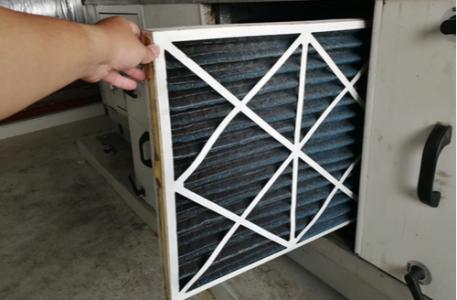
How to Select the Best Furnace Filter for Your Home
Maintaining the filter on a furnace is easily among homeowners’ most mundane chores. After all, filters are hidden out of sight and easy to ignore. And when it’s time to shop for more, the choices can feel overwhelming.
Disposable options include traditional woven fiberglass and newer pleated filters. You can also purchase reusable filters that require periodic cleaning.
Furnace filter prices are all over the place! In addition to selecting the correct size for your system, it’s helpful to know more about the fundamental differences between products.
Rating Systems
When selecting a filter, the first challenge can be understanding its rating, especially since different organizations have developed rating systems to compare filters’ efficiency. What do the ratings mean, and what are the significant differences between these systems?
MERV
The American Society of Heating, Refrigerating and Air-Conditioning Engineers (ASHRAE) created the MERV (minimum efficiency reporting value) system, which is used worldwide.
MERV measures a filter’s ability to capture air particles ranging in size from 0.3 to 10 microns. In the world of microscopic particles, this is a broad scale, so the MERV system incorporates three smaller ranges—0.3 to 1.0 microns, 1.0 to 3.0 microns, and 3.0 to 10.0 microns.
MERV ratings range between 1 to 20, with higher numbers indicating finer filtration of air particles in all three size ranges.
In most cases, a MERV 8 filter is adequate for stopping dirt and debris that can damage furnace blower motors, but it’s less effective at capturing finer particles like allergens.
While the highest MERV rating is 20, filters rated 17-20 are only used where absolute cleanliness is needed, such as in operating rooms and cleanrooms. Filters rated between 1 and 16 are intended for various residential, commercial, and general hospital uses.
MPR
3M developed the micro-particle rating (MPR) system to rate its Filtrete brand of filters and their ability to capture fine airborne particles between 0.3 and 1 micron. MPR ratings range from 300 (similar to MERV 5) to 2800 (comparable to MERV 14).
3M provides detailed comparisons of MPR and MERV ratings by particle size for each filter in its product line.
FPR
The Home Depot sells filters from various manufacturers. But instead of using the MERV scale, the retailer developed its filter performance rating (FPR), which assigns filters into four broad categories.
In the FPR scale, you’ll find Good (4-5), Better (6-7), Best (8-9), and Premium (10) filters. Home Depot’s site says their system considers various factors, and provides general guidance about filter performance at each level.
How Much Filtration Do You Need?
Furnace filters are primarily needed to prevent dirt and debris from damaging the blower motor, which operates whenever you heat or cool your home—or around the clock if you keep the blower running continuously.
But some homeowners are also concerned about improving their home’s air quality. Furnace filters can contribute to those goals.
To remove dust, pollen, pet dander, smoke, or other allergens, you’ll need a filter that’s rated highly enough to capture these particles. It can be helpful to know the size of the contaminants you want to remove to determine if a filter is up to the job.
For example, pollen (10 to 1000 microns) is substantially larger than smoke from cooking oil (0.03 to 0.9 microns).
It’s also essential to understand that the accumulation of particles on a filter can restrict airflow and overheat your system. This is one reason filters must be changed or cleaned periodically—often monthly.
If you’re the kind of person who has a hard time remembering this household chore, select a filter that can be changed every one to three months, so you have some leeway.
But if you’re good about swapping out the filter each month and are not overly concerned with indoor air quality, you can probably get by with inexpensive fiberglass filters. They’re highly effective at screening out dirt and debris, plus some pollen and mold spores.
On the other hand, if indoor air quality is a top priority, you’ll want to invest in pricier, higher-efficiency filters. Or, you might want your system to be professionally modified to accommodate high-efficiency electrostatic or extended media filters.
Health experts also point out that furnace filters are only part of a whole-house air purification solution. To maintain the most pristine air quality, you’ll need to take additional steps like sweeping your rugs and carpets twice a week with a vacuum cleaner equipped with a HEPA filter and regularly cleaning bedding, drapes, and other items that attract allergens.
The Bottom Line
Furnace filters can help improve indoor air quality, but their primary purpose is protecting your furnace equipment. So, the best advice is to worry less about making a “perfect” purchase decision but to prioritize routine maintenance—changing or cleaning your filter as often as recommended.
This simple habit will pay big dividends in extending the life of your furnace while also improving the air you breathe.
